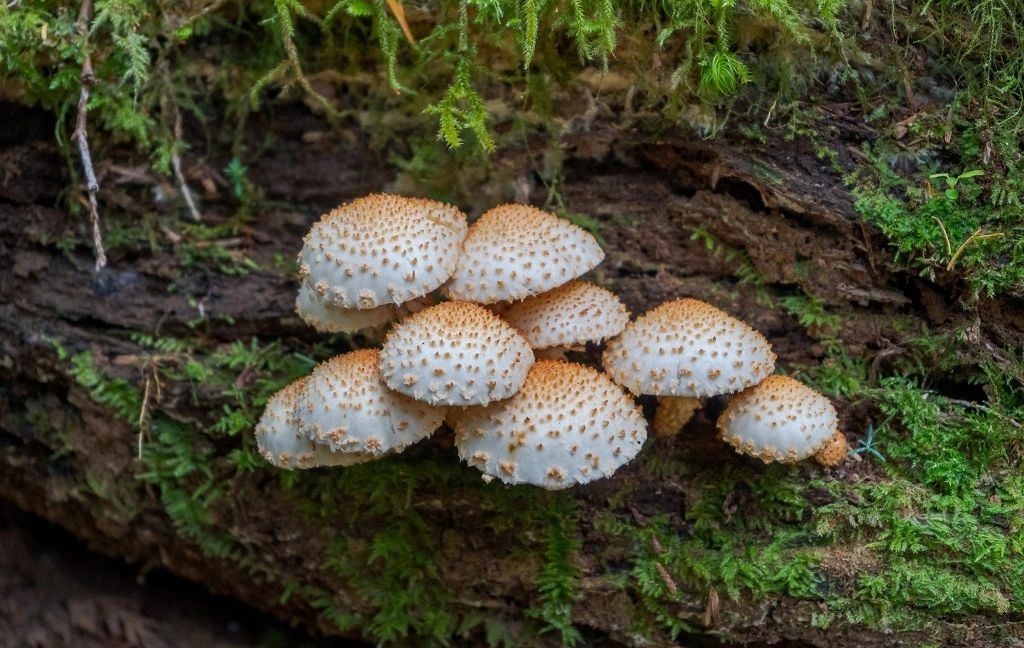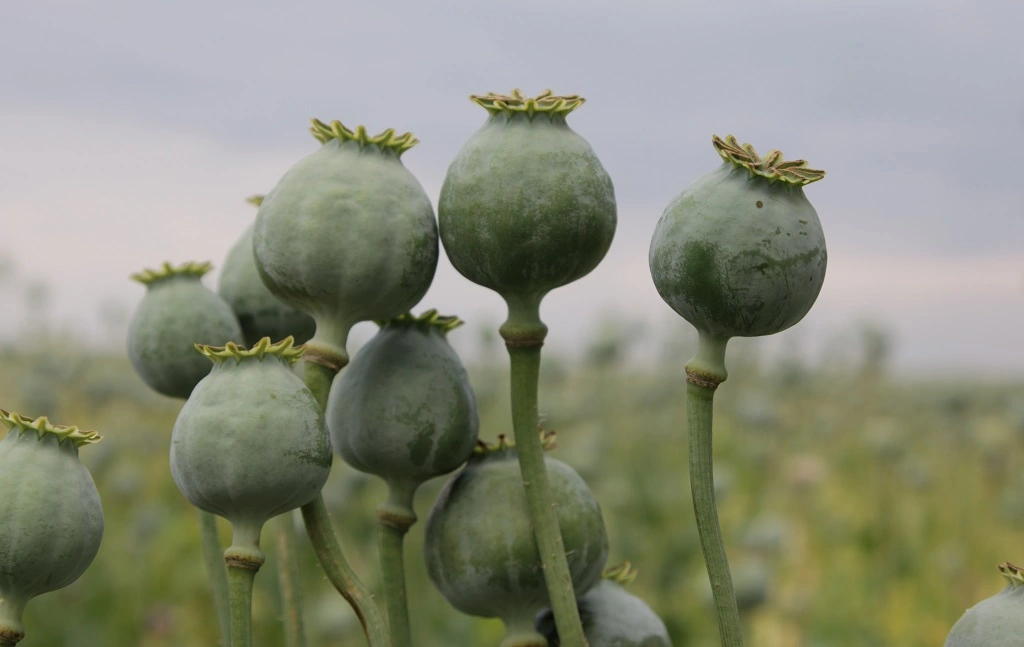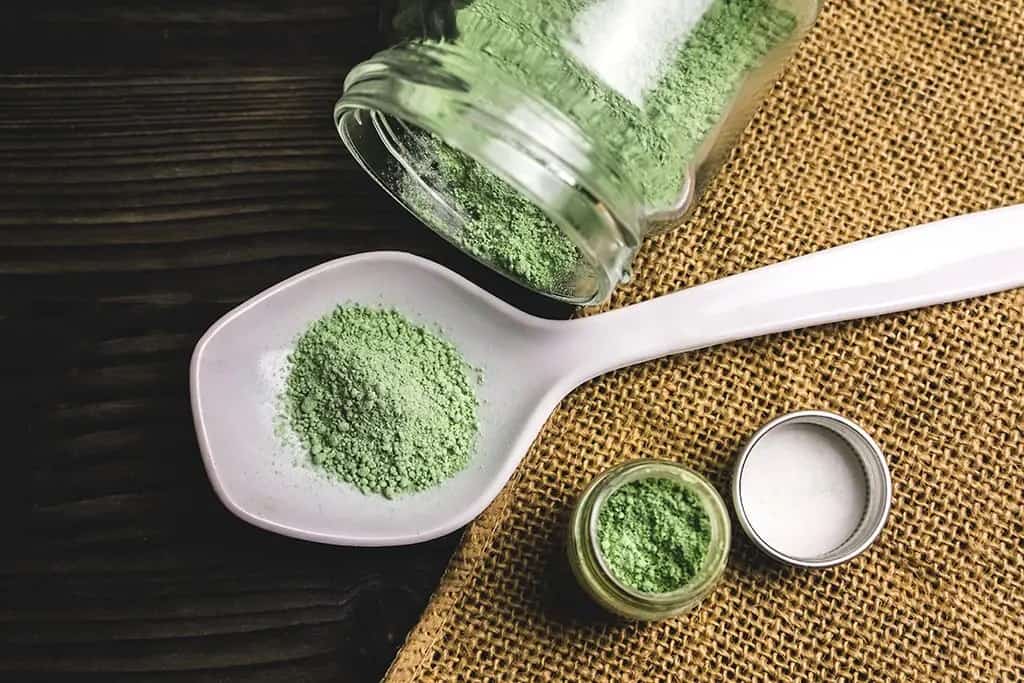
People utilize kratom because of the physiological changes it causes after consumption. Some of the processes interact with the bodily parts in various ways. On the cerebral level, however, there are other responses. Whatever the case, both occurrences are the result of the physiological effects that the kratom alkaloids have on our central nervous system.
Kratom alkaloids are a class of molecules that are responsible for these effects. Scientists have identified more than 40 distinct alkaloids in kratom. It is the highest alkaloid content kratom. However, there isn’t a lot of scientific evidence to draw from because most research on kratom focuses on its alkaloids. They are regarded to have potential medical uses.
In fact, several alkaloid substances provide the consumer with therapeutic advantages. They help in reducing discomfort, increasing productivity, and fostering a positive emotional state. There are a few negative effects that can nevertheless happen.
Also Read: Red Malay Kratom: The Best Strain for Depression and Insomnia
What Are Kratom Alkaloids?
The general public don’t quite understand what kratom alkaloids are. Kratom alkaloids are a class of organic nitrogen-containing substances. They must include a minimum of one nitrogen atom. A couple of them are neutral and hardly acidic. The nitrogen that it creates generates energy.
Additionally, alkaloids defend their carrier against predators. The chemicals taste extremely unpleasant and contain small amounts of poisons. However, kratom alkaloids have a wide range of health advantages. Even now, both contemporary and traditional types of medication uses kratom alkaloids as medicines.
What are the Different Types of Kratom Alkaloids?
Kratom alkaloids are large collections of molecules that each have one or more nitrogen atoms. We discover that scientists have categorized them into three major groups. They come in three varieties: true alkaloids, proto-alkaloids, and pseudo-alkaloids.
Alkaloids are sometimes found to be manufactured substances. We’re concentrating on organic substances that are available in nature nowadays. In the list below, we’ll describe each one in detail.
True Alkaloids: The term “true alkaloids” refers to the most prevalent class. Similar to morphine, cocaine, and nicotine, the heterocycle’s nitrogen atom(s) originates from amino acids.
Proto-Alkaloids: The proto-alkaloids are a different class of substances. These compounds are also made up of amino acids. However, the heterocycle does not contain its nitrogen. These include ephedrine, adrenaline, and mescaline, to name a few.
Pseudo-alkaloids: These substances don’t come from amino acids. They are divided into two main categories. The purine derivative class includes caffeine as well as the steroid and terpene derivatives.
Also Read: Is Kratom Bad for Your Heart? A Scientific Review
Where Are Alkaloids Naturally Found?

To maintain the health of our species, our planet produces a large number of chemical substances. Some of such molecular arrangements can give our bodies revitalizing conditions.
There are numerous alkaloid chemicals available in nature that are useful to make pharmaceuticals. A few substances are medicinal, although they are not as strong. In addition, these are available without a prescription. Hence the most potent chemicals are useful for therapeutic purposes, and the majority are coming from plant sources.
Fungi are a different group of living things that produce alkaloids. A large family of chemical substances called ergot is present in fungi. Other varieties, though, are present in particular mushroom species. The psilocybin alkaloid is the most prevalent type of those compounds. People usually call them magic mushrooms.
The most surprising organisms belong to our last class. Only a few particular species of animals may produce alkaloids in their bodies by adhering to a rigorous diet. However, the alkaloids are absent without those food sources. This is true for several species of frogs and birds, as well. These alkaloids are typically poisonous.
Scientists so far have isolated nearly 20,000 alkaloids, and have examined the biological and therapeutic effects in only 600 of them.
Also Read: Green Vietnam Kratom: One of the Mildest and Aromatic Strains
1. Alkaloids Found in Plants

The majority of alkaloids found on Earth come from the plant kingdom. More than 12,000 of the 20,000 alkaloids that exist come from plants. In fact, around a quarter of all famous flowers produce alkaloids.
But in our culture, we primarily pay attention to those that have psychoactive effects. These substances provide medicinal benefits on the user, which has a direct financial benefit.
Caffeine and nicotine are two common alkaloids we come across in everyday items. People view them as vices. We discover high levels of caffeine in coffee cherry seeds (coffee beans). For the purpose of brewing pots of coffee, we roast, ground, and extract that component from those seeds. Caffeine is popular among a big portion of people.
A considerably lesser percentage of people do use some alkaloids, though. One is nicotine. It is present in tobacco leaves. That alkaloid has a stimulant and a depressive effect, giving you energy while relaxing your nerves.
The most sought-after plant alkaloid substances, like the opioids present in opium poppies, have medical value. Government organizations, however, regulates the pharmaceutical industry.
There are many underutilized alkaloid substances. Since they have minimal influence on individuals, they have little economic worth. However, over time, they may have a big impact on our health. Similar to kratom, more and more research prove plant alkaloids to be beneficial.
Also Read: A Complete Overview on Kratom Legal Standing in Indonesia
2. Alkaloids Found in Fungi

Other creatures that create alkaloids in nature include fungi. These alkaloids contain many hallucinogenic properties. Some of them may also have medical qualities, according to recent studies. For instance, biotechnology companies use psilocybin, an alkaloid present in several species of mushrooms, in clinical trials.
The federal government and the medical community avoided it for a long time because of its hallucinatory characteristics. That view, though, has changed recently. According to ongoing studies, it is effective in treating mental diseases including depression. The first US state to allow hallucinogenic mushrooms was Oregon.
LSD is among the most well-known hallucinogenic drugs ever created. They use alkaloids from the fungus known as ergot to create that chemical compound. It’s a fungus that can develop on cereals like rye that have been incorrectly stored.
According to researchers, one of the earliest fungus ever found gave rise to ergot. Archaeologists discovered the fossilized grass sample in Myanmar. It was present in what they believe to be a distant relative of ergot. There is a theoretical possibility that it was a component of the diets of early Cretaceous period dinosaurs.
Also Read: Green Borneo Kratom Review: The Best All-Rounder Strain
3. Found in Animals

Even mammals produce some alkaloids. In its smell glands, the Canadian beaver produces a complicated concoction of chemical compounds known as castoreum. A nupharamine alkaloid is one of those substances.
Castoreum has been useful as a food additive and an ingredient in perfumes. It’s present in a few Chanel fragrances, along with other leather-related scents, but you can also detect it in various food flavors like vanilla, strawberry, and raspberry. Manufacturers can list it in the ingredients section as a natural flavour because the FDA has classified it as a generally regarded as safe (GRAS) addition. You wouldn’t be aware that you were taking it in.
Certain birds, insects, and frogs contain a group of alkaloids known as batrachotoxins. It is one of the strongest alkaloids in the world, according to scientists. The steroidal alkaloid is extremely dangerous and neurotoxic. Poison dart frogs produce such kind of substance.
Native tribes used the poisonous discharge to coat dart tips for use in battle or in hunting, giving the phenomenon its name. The frogs use food sources to create the alkaloids. Some of the poison dart frogs’ alkaloids have only sporadic therapeutic applications.
Also Read: Scientifically Proven, Kratom Isn’t the Agent of Liver Damage
What Foods are High in Alkaloids?

Alkaloids are also present in many of the foods we eat. We do not experience the physiological effects of consuming the substances whenever we eat them because the majority of them have low quantities.
Spinach is one of these foods. Oxalic acid, an alkaloid, is present. In terms of quantification, the amount of the substance barely touches the surface; nonetheless, certain foods have significantly greater alkaloids concentrations. With certain foods, you experience the effects of higher dosages. These foods have significant alkaloids concentrations.
Food products with significant alkaloids content:
- Coffee Beans: The coffee cherry’s seeds, or what we often refer to as coffee beans, have a high number of caffeine. For the central nervous system, caffeine serves as a stimulant.
- Chocolate: Theobromine and caffeine are two distinct alkaloids that are present in cocoa beans. The strongest alkaloid, though, is caffeine.
- Tea leaves: Another well-liked source of caffeine is the tea plant.
- Kratom: Kratom leaves contain more than 40 different alkaloids, but only two of them—mitragynine and 7-hydroxymitragynine—perform their main function. These substances have a variety of beneficial medical benefits.
Alkaloids are now present in numerous foods, albeit in reduced amounts. Other foods that contain alkaloids include:
- Tomatoes
- Potatoes
- Eggplant
- Bell Peppers
- Some Spices
Also Read: White Maeng Da Kratom: The Most Enjoyable and Stimulating Strain
What Do Kratom Alkaloids Do to the Body?

Kratom alkaloids have a variety of different physiological effects on human systems. The chemicals influence our central nervous system (CNS). By reacting with neurotransmitters and other chemicals, alkaloids excite the brain.
To create different kratom alkaloids effects, some alkaloids interact or bind with particular brain receptors. For example, kratom alkaloids interact with opioid receptors to affect the cells that transmit pain signals to the central nervous system. That makes it possible for our bodies to handle pain, but you must use caution when using such drugs. Take them in moderation. Numerous narcotic alkaloids, which reduce discomfort, can cause significant addiction.
The brain has receptors that ergot alkaloids attach to. However, in this instance, it’s the monoaminergic receptors. The cortical region of the brain experiences hallucinogenic effects as a result of the kratom alkaloids’ connection with serotonin receptors.
The primary action of the hallucinogenic chemicals in psilocybin mushrooms is also similar. Biotechnology companies use these kratom alkaloids to create new hallucinogenic substances. We will thus be conducting more study.
Also Read: 4 Economic Values of Jungle Kratom from Its Ecological Perspective
What Are the Practical Uses of Kratom Alkaloids?

Your neighborhood grocery shop often has a number of products that contain kratom alkaloids. Kratom alkaloids, for instance, are present in more things than we care to name, including dietary supplements, foods, drinks, lotions, cosmetics, over-the-counter pharmaceuticals, and prescription drugs.
Kratom alkaloids have an endless appeal to the market. That’s because kratom alkaloids are extremely useful to us as a species and have many different uses. Here are a handful of the known kratom alkaloids’ characteristics.
- Antiparasitic: Researchers have shown that a few isolated kratom alkaloids exhibit anti-parasitic activity against parasites that are resistant to medication.
- Anti-inflammatory: Quinoline is among the alkaloids with the greatest research on its anti-inflammatory effects in plants.
- Analgesic: Plants like opium poppies produce alkaloids with analgesic properties. Similar to other plants, researchers are also studying kratom alkaloids effects.
- Antibiotic: According to research, certain kratom alkaloids act as antibiotics inside of cells.
- Antibacterial: Some of kratom alkaloids effects are antimicrobial and have recently gained increased attention in the scientific community. Those substances have potential as active ingredients in forthcoming antibacterial medications.
- Antimicrobial: Scientists have been focusing their research on antimicrobial chemicals found in plants as antibiotic-resistant microbes continue to emerge on the planet. Additionally, they’ve found that certain kratom alkaloids make excellent targets.
Also Read: The Future of Indonesia Kratom Production May Be Full of Controversy
Are Kratom Alkaloids Good for You?

Knowing more about kratom alkaloids has likely made you wonder whether they are healthy for you. Unfortunately, the solution is not so clear-cut.
Kratom alkaloids effects are both healthy and bad. Some kratom alkaloids are advantageous to consume because they fight bacteria or reduce inflammation. The plant’s defense against herbaceous predators may be one of the goals. For instance, by having a taste that is so bitter that the animal finds the plant repulsive.
However, many kratom alkaloids contain poisons that affect the metabolism of people, animals, and insects. Luckily, humans have a more sophisticated digestive system and can tolerate small doses of the toxicity that most plant alkaloids produce.
Other kratom alkaloids effects are therapeutic. About 30 to 40 percent of all the contemporary medications we use today originate from plants, and many of them are made from alkaloids. Some, however, are created from different plant components. These consist of amines, proteins, nucleotides, nucleic acid, amino acid peptides, and antibiotics.
Kratom alkaloids, which are the source of the most potent plant-based medicines, are typically categorized as narcotics and included to the Drug Enforcement Agency’s list of Scheduled Substances. Without a prescription, it is impossible to get them. The kratom alkaloids addictive effects are the cause of it. Let’s talk about that more immediately.
Also Read: White Borneo Kratom: Rare, Versatile, Fantastic!
The Dubious Nature of Kratom Alkaloids

Kratom alkaloids effects can be both beneficial and bad for your health. Therefore, it only makes sense to explore how they can also have negative effects. The risk is larger for an alkaloid the stronger it is.
Kratom alkaloids addiction may also result from using certain substances excessively. Avoid using excessive or massive amounts of anything. Depending on the strength, overdoses are possible. However, when used carefully, kratom alkaloids therapeutic effects outweigh the hazards.
Consider opiates. For managing discomfort, opioids are the industry standard. Nothing compares, yet when abused, the substances are very addictive. Opioids are still a blessing if you ever endure acute pain that makes it impossible for you to function without them. However, they can only be prescribed by doctors. That’s definitely for the best, given how addictive they are.
When used carelessly, cocaine is another potentially harmful alkaloid. Coca extracts were once a component of the beverage made by the Coca-Cola corporation. They also made advantage of the kola nut’s caffeine. Back then, drinking soda was undoubtedly preferable to drinking coffee, but as soon as we learned how addictive it was, the corporation stopped using coca extract in its production.
Use the smallest amount necessary when using kratom alkaloids. That applies to drugs that are medically prescribed or obtained legally and utilized for therapeutic purposes.
Also Read: Green Malay Kratom: One of the Highest Alkaloid Profiles
What Do We Know About the Alkaloids in Kratom?

Southeast Asia is the natural home of the kratom tree. To verify anecdotal claims regarding the effects and potency of kratom alkaloids, scientists have started examining various kratom strains that has the most alkaloids.
Mitragynine, which resembles nicotine in many respects, is the most prevalent alkaloid found inside the plant. It functions as a stimulant in small doses, but in bigger doses, it can operate as a sedative.
Similar to morphine, mitragynine also acts as an analgesic, and this is the main reason why researchers are interested in it. They want to use its calming effects for therapeutic purposes. In contrast to mitragynine, which must undergo oxidation in order to be synthesized, 7-hydroxymitragynine is thought to be quite effective at reducing pain.
Researchers are looking into a few more kratom constituents. Studying is currently being done on paynantheine, speciogynine, and mitraphylline. Few or no attention is being paid to the majority of the others. Most significantly, it doesn’t seem like the other alkaloid compounds’ medicinal properties have any market potential.
As a result, it can be difficult for the academic institutes researching kratom to secure financing for their research. Additionally, it is more challenging to examine them because the concentrations of such substances only exist in trace amounts. Perhaps in the future, we’ll discover more.
What Compounds Are Present in Kratom Alkaloids?
Over 40 alkaloids have been found in kratom so far, most of which are present only in trace concentrations, according to research. As a result, we don’t know a lot about those substances. Fortunately, some of these substances are found in higher amounts in other plant specimens. In other words, some substances are easier for researchers to obtain than others.
The two main kratom ingredients, mitragynine and 7-hydroxymitragynine, are the subject of the majority of current studies. These two show a lot of potential for medical researchers. Clinical tests on the isolated molecules have started at a few biotech companies. Should the outcomes of their research be approved by the FDA, they hope.
Also Read: The Portrait of Kali Kratom Farmers in the World’s Biggest Plantation
What Kratom Strain Has the Most Alkaloids?

There are numerous kratom strains available right now. Some businesses provide over 50 options, and many kratom merchants mix different options to create their specialty blends. It’s conceivable for any supplier to have a strain of kratom that is particular to their business.
As a result, it is difficult to say what kratom strain has the most alkaloids. In addition, growing each tree can dramatically alter the alkaloid profile that is present inside it. The concentrations of identical types can vary. But in any case, Green Maeng Da is the most widely used variety. As a result, many customers assert that its potency is on par with all others.
Simply said, some strains have higher alkaloid contents. The most concentrated kind of all is White Borneo kratom. Customer reviews for the Green Maeng Da, however, are still glowing. Theoretically, a general increase in effectiveness may be brought about by the strain’s full-spectrum alkaloid profile. Hopefully, this answers your question of what kratom strain has the most alkaloids.
Also Read: Green Maeng Da Effects: Phenomenal and Friendly for New Users
Parting Words: Scientists Must Continue Their Research
Kratom alkaloids are regarded by some as the most fascinating of all the substances produced by nature. For instance, they offer applications for a healthy living in addition to safeguarding their carriers from predators. Some kratom alkaloids effects are useful for medicinal and therapeutic purposes.
Every narrative, however, has two sides. Even some of the kratom alkaloids with the greatest potential for medical use can have negative side effects when used in big doses. Alkaloids with such danger include opiates. Opiates are considered narcotics, hence addiction is a constant worry when using them. They nevertheless continue to be a crucial substance for people and paved the way for the creation of stronger opioids.

Kratom alkaloids are no exception. Scientists are researching a number of its alkaloid constituents for potential pharmaceutical uses because the majority of them exhibit therapeutic properties. However, there is no scientific agreement or peer-reviewed study at this time. In order to absorb, process, and understand the information as it comes, we need to wait patiently.
Above all, it will take a decade or two before we get a clear picture. Even more important than the quick findings scientists can demonstrate are long-term investigations. When consuming such substances, we should constantly take precautions.
Isolated kratom alkaloids components have shown promise as painkillers, according to recent studies. Hopefully soon, scientific studies will be able to support those assertions.

You may also like these articles…
Borneohale’s New Update in the Product Catalog
ANNOUNCEMENT! Borneohale has decided to update its strain variation. It’s not an easy decision, but[Read More]
Read MoreConserving Hulu Kratom as Ethnobotanical Asset from Indonesia
What is Hulu Kratom? Hulu kratom is basically any kratom originating from Kapuas Hulu Regency[Read More]
Read MoreBest Seller Product
Kratom
Green Thai
Kratom
Super Maeng Da
Kratom
Red Bali
Kratom
Green Malay
Kratom
Red Kalis
Kratom
Red Sulawesi
Kratom
Green Sulawesi
Kratom
Red Elephant
Feeling unfamiliar with kratom?
Submit your email address below to get the latest articles, news, and updates.